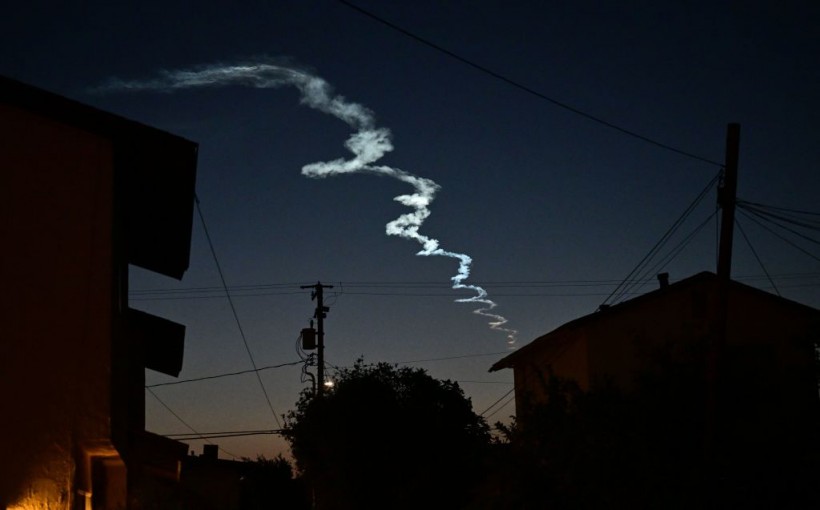A U.S. Space Force satellite-launching rocket might have punctured Earth's upper atmosphere, setting a speed record for launch readiness of just 27 hours.

Streaks from a Firefly Aerospace Alpha rocket illuminates the night sky during the VICTUS NOX responsive space demonstration mission after launching from Vandenverg Space Force Base as seen from Alhambra, California on September 14, 2023.
A Rocket To the Sky Caused an Ionospheric Hole
Firefly Aerospace, under Space Force contract, initiated the launch secretly from California's Vandenberg Space Force Base on September 14 at 10:28 p.m. local time, unpublicized and unlivestreamed, surprising the space community. The rocket carried the Victus Nox satellite for Space Force's "space domain awareness" mission to monitor the orbital sphere.
The unexpected rocket launch first drew attention due to its massive exhaust plume visible from over 1,000 miles away. However, once the plume vanished, a subtle red glow lingered in the sky.
This lingering glow is indicative of a potential breach in the ionosphere, a region of Earth's atmosphere where gases become ionized which spans from 50 to 400 miles above Earth's surface.
However, it is not the only ionospheric hole this year as SpaceX Falcon 9 rocket has also caused the same phenomenon back in July where a remarkable blood-red expanse appeared above Arizona, visible over vast distances.
The formation of ionospheric holes is a phenomenon tied to rocket launches, specifically when the second stage of a rocket burns fuel within the middle region of the ionosphere, situated at altitudes between 125 and 185 miles (200 and 300 km) above Earth's surface.
This process involves the carbon dioxide and water vapor in the rocket's exhaust interacting with ionized oxygen atoms, prompting them to recombine and revert to their standard oxygen molecule form. It results in the molecules becoming excited and emitting energy in the form of light.
The mechanism bears a resemblance to the creation of auroras, although in this case, the dazzling lights originate from the heating of gases by solar radiation, not the recombination of oxygen atoms.
Importantly, these ionospheric holes do not pose any threat to inhabitants on Earth's surface. They are naturally temporary, closing up within a matter of hours as the recombined gases undergo re-ionization.
READ ALSO: SpaceX Launched Fifth GPS Satellite for US Space Force, Marking Its 19th Launch This Year
Why the Unusual Short Notice For the Rocket Launch?
In October 2022, Firefly Aerospace secured the Victus Nox contract, which came with a challenging condition: launch the satellite with less than 24 hours' notice at an unspecified future date. To meet this demanding requirement, the launch team undertook several crucial tasks within this narrow timeframe.
They had to update the rocket's trajectory software, carefully encapsulate the satellite, transport it to the launch pad, install it within the rocket, and complete the final checks. Unfortunately, their launch schedule was further disrupted by adverse weather conditions, leading to a delayed launch.
The primary objective of this mission was to showcase the United States' capability to swiftly deploy an asset into orbit with minimal advance notice. Lt. Col. MacKenzie Birchenough, an officer associated with Space Force's Space Systems Command, emphasized this when the mission was initially announced last year.
This endeavor aimed to ensure that the nation could enhance its space capabilities rapidly and effectively, responding to emerging needs in space operations.
RELATED ARTICLE: Elon Musk's SpaceX Launch of Falcon 9 Rocket Punctures a Temporary Hole in Earth's Ionosphere
Check out more news and information on Space on Science Times.














